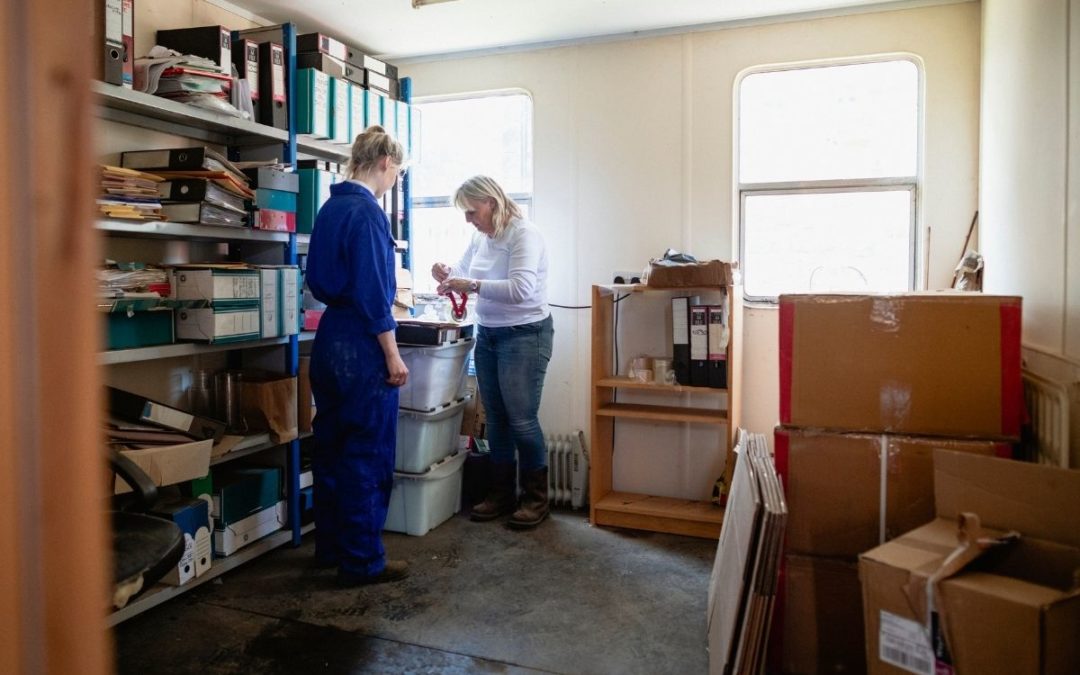Running low on space due to a sudden increase in supplies or inventory? Before you start looking at commercial warehouses to lease, consider renting a commercial or large storage unit. You’ll find that, generally, the cost per square foot is cheaper. Consider the following benefits of using large storage units for your business inventory.
The Biggest Benefits
- Peace of mind with round-the-clock surveillance and other security features
- Free up space without rushing into a pricey commercial property contract (save money too!)
- Grow on your own terms without the added pressure of a large lease payment
- Save time by choosing a facility closest to your home
- No more cluttered workspace or tiny, cramped “backroom”
- Avoid office clutter overflowing into your home
- Enjoy easy access; in most situations, you will be able to drive right up to your unit before, during, and after business hours
How to Optimize Your Space
Think of large storage units as mini-warehouses (or large closets) and follow these practical tips to optimize your space.
Choose the Right Type of Unit
The type of business you’re operating will determine the type of storage unit you need. For example, renting a ground-level storage unit with drive-up access makes the most sense for landscape contractors. However, renting a climate-controlled business storage unit makes practical sense for accountants, realtors or other types of professionals who need to preserve important records. Make sure to find out what you are allowed to store inside the unit and if you can attach anything to the walls.
Sketch It Out
Use graph paper to draw a floor plan of the unit and depict how you plan to use your space. Include walkways to maximize access.
Go Vertical
Defray storage costs by utilizing as much vertical space as possible. Line walls with shelving units with the appropriate depth and proper brackets to ensure safety.
Use Labeled Stackable Bins and Boxes
Invest in a labeling machine and label shelves and boxes on all four sides in addition to the lid. Use clear plastic bins so items are in plain sight. Whenever possible, choose a consistent size for bins and boxes.
Smart Placement
Place long-term storage items, such as less frequently used or sold inventory, on top shelves and toward the back to maximize space and productivity. If you are using cardboard boxes, stack them no more than 4-feet-high to avoid buckling and damage. You can exceed this threshold if you are using a sturdier type of bin or box. Place heavy items on the floor or on the bottom shelves in the storage unit to create a secure base for lighter items.
Organize Large Storage Units Regularly
Set up a routine to declutter, clean, and spot-check your shelves, bins, and boxes. Plan for regular maintenance and audits of what you have in the storage unit. It could be time to get rid of boxes or bins that are getting worn out or breaking down. Consider placing inventory logs inside bins to record inventory going out and inventory coming in. Placing these logs in protector sheet pockets will keep them neat and tidy.
Clean Up the Clutter with a Large Storage Unit
Chambers Connector Storage offers storage units with easy access, state-of-the-art security equipment, and affordable prices for any business. Contact Chambers Connector Storage with any questions or to learn more about our large storage units for businesses.


Recent Comments